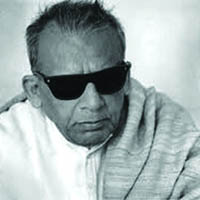Benode Behari Mukherjee
BORN DIED EDUCATION QUALIFICATIONS SELECTED SOLO EXHIBITIONS SELECTED POSTHUMOUS EXHIBITIONS HONORS AND AWARD ABOUT THE ARTIST Born in 1904, Binode Behari Mukherjee joined Vishwa Bharti University and Kala Bhavan in Santiniketan in 1919. He had Nandalal Bose and Nobel Prize-winning poet Rabindranath Tagore as his gurus and spent his most creative phase at the institute. He joined his alma mater as an art teacher in 1925. Mukherjee eventually left Santiniketan in 1949 and moved to Delhi. Meanwhile, Mukherjee worked as a curator for the Nepal Government Museum and as an advisor to the Nepal Education Department, in addition to training artists in Mussourie and Patna. Mukherjee was one of the leading figures in pre-independence Indian art. He played a crucial role in the evolution of visual art. He broke away from the Bengal Revival School and established a more modern school of art. His importance as an artist lies in his ability to break from the turn-of-the-century Bengali revivalist mold and create a modern and dynamic vocabulary, which paved the way for the next generation of artists in the 1940s. Mukherjee took art beyond the mastery of literary themes and mythology, towards a form that gave importance to pictorial elements such as color, lines, and texture. This was at a time when modern art was considered taboo and Indian tradition was thought to be sacred and immutable. Mukherjee's output as an artist spans half a century and has been varied and ever-changing. As an artist, he has experimented with many mediums, from murals to collages, from woodcuts to calligraphy, and from watercolors, oils, inks, and crayons to graphics. Despite having poor eyesight, Mukherjee traveled a lot and the real themes for him were his experiences. He once wrote: The person who does not wake up with a pulsating image, a small touch, or a sound, cannot understand the word beauty. A person who does not know or think beyond worldly needs does not need beauty. Thus, whether he painted the sparse bushes around Santiniketan, sunflowers or lilies, or even the landscape of the Himalayas, his paintings were based not only on observations but on timeless patterns, on the intrinsic feel and texture of things. Initially, Mukherjee drew the people he saw and met around him. But as his vision deteriorated, he moved toward the elemental, the bare essence of structures and forms. His stylistic evolution shows his preference for simplicity. A serious student of the Indian mural tradition, his skill and competence found expression on the walls of the Hindi and Chinese Bhavans (wings) on the campus premises of Tagore University. Later he moved on to wax sculptures. The ceilings of the Kalabhavan student hostel, which he did in egg tempera, marked the climax of his pursuit of graphics. Mukherjee was a great inspiration for filmmaker Satyajit Ray. He was Ray's art teacher. The filmmaker made a documentary The Inner Eye, where he portrayed the triumphant spirit of his art teacher. Mukherjee exhibited his works in Mumbai, Calcutta, New Delhi, Ahmedabad, Mussorie and Tokyo. His works are in the collection of the National Gallery of Modern Art, New Delhi, Rabindra Bharti, Calcutta, and other public and private collections. Awarded the Padma Vibhushan in 1974, the artist was also honored by Vishwa Bharti with his highest title, Dekhikottam. Binode Behari Mukherjee became completely blind in 1957. He died in Delhi on 11 November 1980. Notification - We do not usually display Benode Behari Mukherjee's work, only send it to private art collectors and interested art buyers.
7 February 1904, Behala, Kolkata, West Bengal.
11 November 1980
1919-24 Kala Bhavan, Visva Bharati University, Santiniketan
1917-19 Visva Bharati University, Santiniketan
1969.63 Retrospective, New Delhi
Retrospective of 1959, Calcutta.
1949.64 Retrospective, Benares
1921 Indian Society of Art (ISOA), Calcutta
2012-13 Nandalal Bose and Benode Behari Mukherjee at Lalit Kala Akademi, New Delhi
2012 Akar Prakar, Kolkata
2011 Ethos V Indian Art through the Lens of History (1900 to 1980), Indigo Blue Art, Singapore
2011 Manifestations VI, Delhi Art Gallery, New Delhi
2008 Freedom 2008 Sixty Years of Indian Independence, Center for International Modern Art (CIMA), Kolkata, Museum Gallery, Mumbai
2006-07 Binode Behari Mukherjee A centenary retrospective 2006-2007, in collaboration with the National Gallery of Modern Art (NGMA), New Delhi at Vadehra Art Gallery, New Delhi
1995 Man and Nature Reflections by Six Artists, National Gallery of Modern Art (NGMA), New Delhi
1980 Rabindra Puraskar
1980 Bhartiya Bhasha Parishad Award
1977 Honorary doctorate by Vishva Bharti
Barman Arts Online


